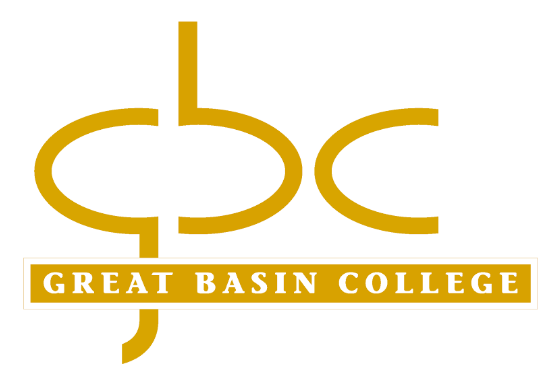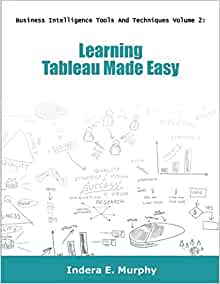
If you have ever wondered what Dragons look and feel like, you are not the only one. Peachtree publisher is hosting a blog hop for the book Return of the Library Dragon. The tour will feature the illustrator, editor, and author. Continue reading to find out more about this book.
Dragons are a mythical creature
Dragons are mythical creatures and are mentioned in the myths of many ancient cultures. They come in many shapes and can be described as fierce, intelligent, and ferocious. They can be found on the land or in the sea and form an important part the mythology of many cultures.

They are dreamlike creatures
Dragons are animals in the dream world that can represent a number of different feelings and situations. While they are often seen in dreams as dangerous creatures, they can also be useful. A dragon may also signify a relationship that is volatile. A dragon can be used to symbolize someone you need help with.
They look like Dinosaurs
Dragons' muscles are similar to those of dogs and horses. They are thin at the head, tail and stomach, but larger at the back and chest, abdomen and belly. The process of covering a dragon in scales can be quite time-consuming. First, draw a skeleton. You can use a dog skeleton, or a bat skull, as a template to create dragon skeletons. You can then customize the bones and joints to create a dragon that looks as real as possible.
They are fierce
Dragons are large and ferocious creatures, which are known for causing havoc in Kingsland. Dragons can be difficult to control and are often hostile. They consider all other creatures to be enemies. Mother dragons run rampage until they get back their child if they are separated.

They are very durable.
Dragons, mythical creatures, inhabit both film and literature. Their size can range from grasshoppers up to the size heaven and they are often antagonistic towards people. Although they were often depicted as Satanic Archetypes in older works, modern works like Dragonriders of Pern made good dragons a popular type of mythical animal.
FAQ
What is the Internet connection required for eLearning.
It depends on your purpose. You don't need an internet connection if you are taking an online course. However, if you are going to use any kind of interactive features such as quizzes etc., then you need access to the web.
What is electronic learning?
E-learning is an online learning solution for individuals, organizations, and institutions. It is a method to transmit information and instruct over electronic media like computers, mobile devices and other digital technology.
This type of learning uses technology to deliver information rather than physical materials.
E-learning doesn't have to take place in traditional classrooms. It can be done anywhere there is Internet access, including at home or on the road.
What is eLearning all about?
E-learning can be time-consuming and requires effort. It also requires an understanding of how people learn. The learning experience should be designed around what learners want to achieve.
Content must be both interesting and useful. Visual aids like images, animations, videos, and interactive elements should be included in learning materials.
E-learning should be engaging and fun. It should be focused on student motivation. This includes providing feedback and encouragement for learners who are working hard at achieving goals.
What are the different types of e-learning? What are their purposes?
There are 3 major types of online learning:
-
Content delivery- This type or e-learning seeks to provide information to students. You can find textbooks or lesson plans as examples.
-
Instructional design: This type e-learning helps learners to develop their skills. Tutorials and simulations are two examples.
-
Learning management – This type is eLearning that allows instructors to monitor and organize student activity. Examples include virtual classrooms, discussion forums, and virtual classrooms.
What are the advantages of e-learning for students and teachers?
E-learning has many benefits, including improved learning outcomes for students and teachers. It also allows learners to access information at any time and from anywhere. E-learning empowers educators to connect with their students using technology in a way that was not possible previously.
E-learning allows teachers the opportunity to give personalized instruction and feedback to students, and also support their progress. Students are more motivated and engaged as a result. Teachers can use e-learning to develop skills such as communication, collaboration, and critical thinking. It can be used to improve teaching practices by providing opportunities for self reflection and reflection on the experiences of others.
E-learning allows for a reduction in training costs. If a teacher wants his/her students to learn about a new topic they will need to purchase books and other materials. However, the same material may be available online so there's no need to buy it.
Statistics
- Interestingly, students' participation in online training grew by 142% in the past year alone, indicating how quality education and up-to-date teaching pedagogy are preferred by learners and working professionals to upskill across India. (economictimes.indiatimes.com)
- India's PC market clocks 9.2% growth to 3.4 million units in the September quarter (economictimes.indiatimes.com)
- The UK sample was relatively balanced in terms of gender (56% male) compared to the Gambian group (77% male). (sciencedirect.com)
- E-learning is intended to enhance individual-level performance, and therefore intend to use of e-learning should be predicted by a learner's preference for self-enhancement (Veiga, Floyd, & Dechant, 2001). (sciencedirect.com)
External Links
How To
Why is e-learning so important?
E-Learning can be a great way for companies to keep employees interested at all times. They learn from each other and from experts. This allows them to stay competitive and gains valuable knowledge.
E-Learning offers employees the opportunity to interact with one another, creating a sense community.
E-Learning is becoming more popular due to its efficiency and low cost. Companies are realizing that they don't have to hire extra staff to train their current staff.
Here are some benefits to e-learning.
-
Low Cost - There is no need to pay for expensive equipment such as computers and projectors. Access to the Internet is all that's required.
-
E-Learning offers high efficiency and saves money over traditional training methods.
-
Flexibility – Employees can access e-learning from anywhere, anytime. They do not have to attend classes to receive training.
-
Customization - The format of e-learning is customizable. It can be presented however the learner prefers.
-
Learning is self-paced. Students can complete the course at their own pace without worrying about being graded.
-
Interactive - E-learning allows learners to interact with each other through discussions and polls.
-
Accessible - Anyone can access E-learning if they have an internet connection.
-
Interactivity – E-learning promotes interaction between students, teachers and other learners. This makes learning fun and interesting.
-
Relevance - Elearning is relevant to the learner’s current job. This means that he/she will be able to apply what he/she learns immediately after completing it.
-
Social Learning - E-learning enables learners to share ideas and experiences with each other. This encourages them to collaborate and learn from each other.
-
Collaboration - E-learning allows learners to collaborate with each other. This helps to improve communication skills as well as teamwork.
-
Personalized Learning: E-learning gives individuals the ability to personalize their learning experience. This makes the learning experience more interesting and enjoyable.
-
Online Communities – E-learning allows people to form virtual communities. This creates a sense of belongingness amongst them.
-
Peer Feedback: E-learning provides learners with feedback based their performance. This encourages them to improve their performance.
-
Repeatability - Elearning can be repeated as often as necessary.
-
Portability - E-learning content can be accessed from different devices like laptops, tablets, smartphones, etc.
-
Scalability: E-learning is easily scaleable.
-
Multimedia Content – E-learning uses multimedia content for learning.
-
Digital Library – E-learning offers digital libraries, where learners can store and retrieve their resources. These can be easily retrieved at a later date.
-
Mobile Learning – E-learning is now possible via mobile phones or tablets.
-
Adaptive Learning - E-learning adapts to the individual learner's ability level.
-
Gamification – E-learning uses game elements to enhance the learning experience. This helps to increase motivation and engagement.
-
Virtual Classrooms: E-learning allows teachers and students to communicate via virtual classrooms.
-
Realtime Communication-E-learning allows teachers and students to communicate in real time.
-
Remote Learning – E-learning can be done remotely by both student and teacher.
-
Distance Education – E-learning can be described as distance education, because it is done over a long time.
-
Open Source Learning- E-learning utilizes open source software so everyone can access the same material.